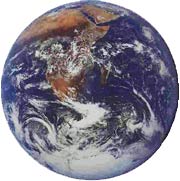
Envision
the new way to experience the Web
User's Guide - Appendices

Envision
the new way to experience the Web
User's Guide - Appendices
Notes on installation
The installation procedure described in Getting Started will not work if your browser is set to not auto-open downloaded files. In this case, use the instructions below.
If you wish to keep the Envision installer for possible future use, drag it out of the trash to an appropriate location on your drive and follow the instructions below.
To use the installer, double-click it to cause a disk image to be created and mounted on your desktop. Close the disk image's window, select the mounted disk image, and type cmd-D (the Finder's Duplicate command under the File menu). A folder containing the contents of the disk image is created. You can then unmount the disk image and copy the folder to the Applications folder.
Image formats supported by Envision
Envision supports simple AppleScripting. For class and command descriptions, see Envision's AppleScript dictionary. If you're running Jaguar, see the item above under Limitations with Envision on Jaguar.
Power-user shortcuts
The Envision image cache
The images that Envision downloads for possible display (if they meet the criteria for display) are temporarily stored in a folder on your hard drive. When you close a show, all files are deleted from the cache folder. Also, you can force a clearing of the cache while a show is running by choosing Clear Cache... from the Envision menu.
If you're running a show on a large site, or a show that goes offsite to many levels, you should be sure you have plenty of free space on your hard drive before you start the show.
As Envision scans the pages of a site, it logs the URLs of pages and images it finds. This information is written to Envision Crawl.log which is located in the Logs folder of the Library folder of your home folder. Although you will not normally need to even look at the log, it does contain information useful for troubleshooting, such as determining why certain images don't show up. To open the Envision scan log, double-click Envision Crawl.log -- the file will open in OS X's Console application.
The URLs of pages scanned are enclosed in [ ]. Links on a page to images and to other pages follow the page URL and are indented. Links to images are preceded by S: while links to pages are preceded by L:.
The scan log is only written to when a site is scanned. If you run a show that has auto-rescan turned off (the default), the site will be scanned only once, no matter how long the show runs. If you start many shows, or run shows that have auto-rescan enabled, you should periodically check the size of the scan log, as it can become large over time.
If you choose to set a custom color for the background of Envision's main window, you'll do it through the Colors panel. Once the Colors panel is open,